Israel was not on our original itinerary; it got added as part of the reorganization caused by the cancellation of the stops in Egypt (one of which got added back in). The shore excursion people worked long hours to arrange some shore excursions for Israel, and there were definitely choices to be made: Haifa, the Dead Sea, the fortress at Masada, Bethlehem, the Yad Vashem Memorial, and Jerusalem. My friend Jeanne and I decided to do a tour together, and wanted one that went into the Old City of Jerusalem. There was really only one that did appreciable walking through the Old City; that was the one we picked.
Of course, we got our tour stickers and boarded a bus (Bus Number 7), then drove through the Israeli countryside to get to Jerusalem. Along the way we passed several burned-out armored vehicles left over from one or another of the wars with their neighbors; I wasn't quick enough to get a picture, but it was the first time I had seen anything like that. As we neared Jerusalem, the bus stopped for a bathroom break and a panoramic view of our destination (also a photo op.).
We had another stop before reaching the city, to give us a view of Bethlehem (and also the settlements and wall that are causing so much controversy).
We talked later with other passengers who went on the tour that went to Bethlehem, and they told us that at the border, their Israeli guide had to get off the bus, but the bus and driver were allowed through. A Palestinian guide got on the bus and led the tour through Bethlehem, then a reverse hand-off was done at the border on the way back. Other passengers who had been on tours that went into Jordan in earlier years (from Israel) said their buses had to park in a big parking lot on the Israeli side of the border, while the passengers got off and walked into Jordan and boarded a Jordanian bus, again doing the opposite on the return. So there is some prickliness still.
After the stop overlooking Bethlehem, we continued into Jerusalem and drove to the Old City (actually to a mall next to it), where we got out and continued on foot. We entered at the Jaffa Gate through the pedestrian entrance, although there is a huge opening that some ancient king had made because he didn't want to get out of his chariot to enter the city.
A short while later we found ourselves entering the narrow streets of the Christian Quarter. These streets barely allow two people to walk abreast, and they are lined with all sorts of shops. Vendors have small two wheeled carts that they use to bring their merchandise in to the shops; we had to move aside several times to let them through.
We walked through the Christian Quarter on our way to the Church of the Holy Sepulchre, but the guide explained that there is a tradition to put belongings on an altar there and get them blessed, so we would have a shopping stop before going to the church, in case anyone wanted to get their purchases blessed. The store she brought us to had special fifty percent off deals for Bus Number 7, and some wonderful wood carvings, but all religious objects (icons, madonnas, creches, crosses), so I decided not to get any for David. I did get a pendant for myself, and considered whether to get it blessed, but decided not to.
When we got to the Church of the Holy Sepulchre, it was a mob scene. Hundreds of people in the courtyard, and piles of unbuilt scaffolding lying around everywhere; Jeanne and I wondered whether it was preparation for Easter and decided it probably was. We followed the guide into the church, joining the line that snaked through the place. There were four main rooms to see: the main room where you enter, with wonderful frescoes and the altar where packages are blessed, an upstairs room with another altar at which people can pray (and many were), then back down into the entrance room and to another room in the back of the church that has the sepulchre itself -- a very impressive sight, indeed.
It is possible to go into the sepulchre, but the guide warned us that we did not have time to do that, as the line is so very long that it would take at least 45 minutes. Next to the room with the sepulchre is another room with beautiful mosaics and marble floors and a wonderful picture of the Madonna and Child. The church is apparently maintained by Greek Orthodox priests; at least, all the priests I saw there were Greek Orthodox.
After leaving the Church of the Holy Sepulchre, we headed back into the warren of shops, heading for the room where the Last Supper took place. At this point I was starting to be very intrigued by the contrast between the everyday shopping areas we were going through and the religious nature of the sights the guide was taking us to. I hadn't really expected so many Christian or religious sites to be part of the tour (rather silly, really, when you think about the fact that Jerusalem is a holy city for three major religions, and that Christ is a major figure in all of them). It was also starting to sink in how truly old the city is. On our way to the site of the Last Supper, just after entering the Jewish Quarter, we passed an archaelogical site, one of many we saw. The guide explained that every time they had to dig to fix a sewer or whatever they run into archaelogical artifacts. In fact, Jerusalem started to build a subway, but ran into so many significant archaelogical remains that they decided to build it aboveground so they wouldn't have to dig.
While we were looking at this site, one of the women announced that her husband was lost. Everyone looked for him, but he was really and truly lost. This was the second time in my life that I had been on a tour that lost someone and couldn't find them. When we started, the guide had handed out cards with her cell phone number and a list of other emergency contacts for just such a happenstance; of course, the wife had the card and their cellphone. No one quite knew what to do, except the guide: she alerted the tourist police and her agency to be on the lookout for him, and said we should continue on. I heard one lady talking to another and saying she was sure he had been snatched by terrorists, but I thought his wife was probably right that he had just wandered off and then couldn't find us. (That turned out to be the case: when we went to lunch later, the guide got a call just as we were reaching the restaurant. The man hadn't been able to find us, so he went back to the store where we had shopped to get help. The store people recognized the Number 7 sticker, and called the guide to tell her they had her lost sheep. She told them where to send him, they put him in a cab, and he got to the restaurant half an hour later. He had to take a lot of razzing, but I guess he didn't care. It also shows that the tour guide relationship with shops is not all bad.)
Just before we reached the site of the Last Supper, we passed a statue of King David.
Sort of a reminder that it is not only Christians who feel this city is holy. In the room of the Last Supper, there was no table but there were seats and columns
and other decorations. The guide never explained how they know it is the room of the Last Supper; in fact she retreated into guide talk ("traditionally" "it is believed") but more honest than most, she said no one knows for sure, they just think this is the room. We then moved on toward the Zion Gate, where we would meet the bus to take us to lunch. On our way, we passed two men carrying an old-fashioned drum and a shofar (instrumentalists for a traditional band?).
Lunch was in a five-star hotel (I don't think we are allowed to go into lesser hotels :-)). Jeanne is a vegetarian but the guide told her that would be no problem, and it wasn't. They set out a huge buffet for us, with seven or eight kinds of salad, some really, really good hummus, and even wine that was pretty good. The meat (chicken) was actually not as good as the salads and vegetables.
After lunch we went to the Mount of Olives, which has a magnificent view over the Old City, the Jewish Cemetery, and the Dome of the Rock, which used to be a mosque but is now a shrine according to the guide.
After taking lots of pictures, we continued to the Garden of Gethsemane and the Church of All Nations (which is called that because many nations subscribed to the fund used to build it, and each contributing nation has a plaque in the ceiling commemorating the gift). The guide told us that the olive trees at Gethsemane had been carbon-dated and found to be around 2500 years old, so they were there when Christ walked in the garden and was found there by the Romans.
The guide also explained why Jesus was there. She said that in order to understand, you have to remind yourself that Christ was a pious Jew, who obeyed all the Jewish laws, including observing the Sabbath. Jews are not supposed to do anything that would tire them on the Sabbath, and that includes walking more than a certain distance. She said if you measure the distance from the room of the Last Supper to the Garden of Gethsemane, you would find that is the prescribed distance. So Jesus, as a devout Jew, spent the night in the Garden rather than break the Sabbath by continuing further.
The last stop on the tour was the Western (Wailing) Wall. It was interesting that there are separate entrances for men and women, and access to the Wall is divided as well: men on the left, women on the right. Going out was not divided, however.
We all went up to the wall and placed little papers with wishes in the cracks. Many many people were there reading little books that looked like hymnals (but probably weren't) and praying. The really devout ones would not turn their backs on the wall, but walked away backwards.
The wall was the climax of the tour. We went back to our bus and drove past some sights of modern Jerusalem (government buildings, the new subway line, apartments, etc.) on the way out of the city, then back to the ship. I have to admit that whatever I expected from seeing Jerusalem (which had not been on any of my bucket lists), what I got was a real respect for the antiquity and atmosphere of the place, where nearly everywhere we went we were walking on ground and by buildings that were there and part of a major city since before the Roman Empire. The schedule change was real serendipity for me....
Following ancient footsteps
Wednesday, April 06, 2011
 Ashdod, Israel
Ashdod, Israel
Other Entries
-
37The (unexpected) first day in Manila
Mar 0433 days prior Manila, Philippinesphoto_camera24videocam 0comment 0
Manila, Philippinesphoto_camera24videocam 0comment 0 -
38The second day in Manila (formerly the first)
Mar 0532 days prior Manila, Philippinesphoto_camera4videocam 0comment 0
Manila, Philippinesphoto_camera4videocam 0comment 0 -
39Hong Kong Special Administrative Region
Mar 0730 days prior Hong Kong, Chinaphoto_camera20videocam 0comment 1
Hong Kong, Chinaphoto_camera20videocam 0comment 1 -
40Last day in Hong Kong
Mar 0829 days prior Hong Kong, Chinaphoto_camera18videocam 0comment 0
Hong Kong, Chinaphoto_camera18videocam 0comment 0 -
41Cooking in Saigon (HoChiMinh City)
Mar 1126 days prior Phu My Vietnam, Vietnamphoto_camera28videocam 0comment 1
Phu My Vietnam, Vietnamphoto_camera28videocam 0comment 1 -
42Tea and Raffles Hotel
Mar 1324 days prior Singapore, Singaporephoto_camera22videocam 0comment 0
Singapore, Singaporephoto_camera22videocam 0comment 0 -
43Wild times at the Bird Park!
Mar 1423 days prior Singapore, Singaporephoto_camera35videocam 0comment 0
Singapore, Singaporephoto_camera35videocam 0comment 0 -
44Kochi, province of Kerala (Land of Coconuts)
Mar 1819 days prior Kochi, Indiaphoto_camera22videocam 0comment 0
Kochi, Indiaphoto_camera22videocam 0comment 0 -
45Magnificent Mumbai, Heartbeat of India
Mar 2017 days prior Mumbai, Indiaphoto_camera14videocam 0comment 1
Mumbai, Indiaphoto_camera14videocam 0comment 1 -
46Fun and games in Bombay (Mumbai)
Mar 2116 days prior Mumbai, Indiaphoto_camera15videocam 0comment 1
Mumbai, Indiaphoto_camera15videocam 0comment 1 -
47The Natural History of Sharjah
Mar 2413 days prior Dubai, United Arab Emiratesphoto_camera21videocam 0comment 0
Dubai, United Arab Emiratesphoto_camera21videocam 0comment 0 -
48Superlative Dubai
Mar 2512 days prior Dubai, United Arab Emiratesphoto_camera15videocam 0comment 0
Dubai, United Arab Emiratesphoto_camera15videocam 0comment 0 -
49Trading the Amsterdam for a Dhow
Mar 2611 days prior Muscat, Omanphoto_camera14videocam 0comment 0
Muscat, Omanphoto_camera14videocam 0comment 0 -
50Checking out Job's Tomb
Mar 2710 days prior Salalah, Omanphoto_camera18videocam 0comment 0
Salalah, Omanphoto_camera18videocam 0comment 0 -
51Luxor after All!
Apr 024 days prior Safaga, Egyptphoto_camera21videocam 0comment 1
Safaga, Egyptphoto_camera21videocam 0comment 1 -
52Petra, the Rose City
Apr 033 days prior Aqaba, Jordanphoto_camera20videocam 0comment 0
Aqaba, Jordanphoto_camera20videocam 0comment 0 -
53Transiting the Suez Canal
Apr 051 day prior Suez, Egyptphoto_camera15videocam 0comment 0
Suez, Egyptphoto_camera15videocam 0comment 0 -
54Following ancient footsteps
Apr 06 Ashdod, Israelphoto_camera22videocam 0comment 0
Ashdod, Israelphoto_camera22videocam 0comment 0 -
55Experiencing Ephesus
Apr 082 days later Kusadasi, Turkeyphoto_camera19videocam 0comment 1
Kusadasi, Turkeyphoto_camera19videocam 0comment 1 -
56Seeing Kusadasi
Apr 093 days later Kusadasi, Turkeyphoto_camera14videocam 0comment 0
Kusadasi, Turkeyphoto_camera14videocam 0comment 0 -
57Apr 12, 2011
Apr 126 days later Naples, Italyphoto_camera18videocam 0comment 0
Naples, Italyphoto_camera18videocam 0comment 0 -
58Apr 13, 2011
Apr 137 days later Naples, Italyphoto_camera12videocam 0comment 0
Naples, Italyphoto_camera12videocam 0comment 0 -
59Apr 14, 2011
Apr 148 days later Civitavecchia, Italyphoto_camera25videocam 0comment 0
Civitavecchia, Italyphoto_camera25videocam 0comment 0 -
60Chillin' in Cartagena
Apr 1610 days later Cartagena, Spain and Canary Islandsphoto_camera10videocam 0comment 0
Cartagena, Spain and Canary Islandsphoto_camera10videocam 0comment 0 -
61Apr 17, 2011
Apr 1711 days later Cádiz, Spain and Canary Islandsphoto_camera15videocam 0comment 0
Cádiz, Spain and Canary Islandsphoto_camera15videocam 0comment 0 -
62Apr 19, 2011
Apr 1913 days later Madeira Islands, Portugalphoto_camera13videocam 0comment 0
Madeira Islands, Portugalphoto_camera13videocam 0comment 0

 Ashdod, Israel
Ashdod, Israel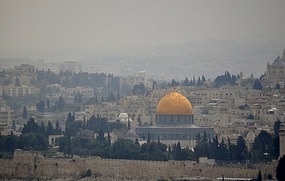
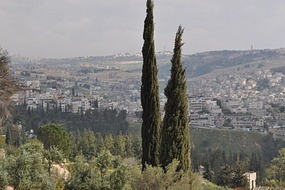
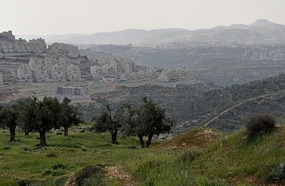
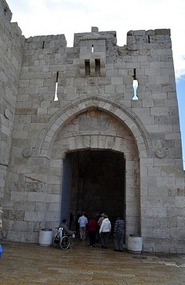
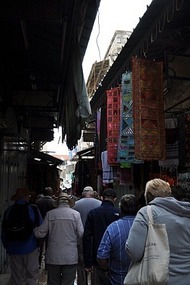
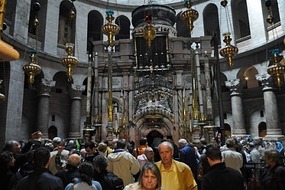
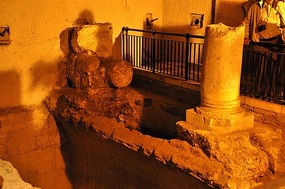
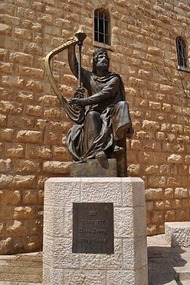
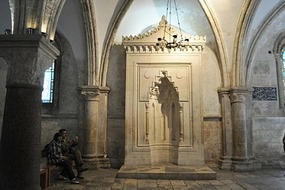
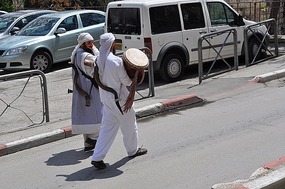

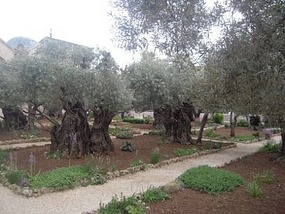
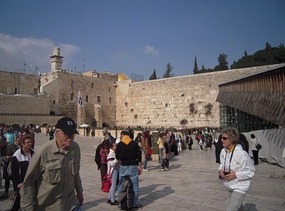















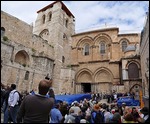
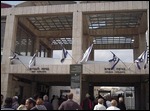

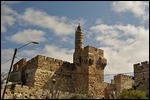
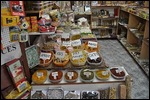
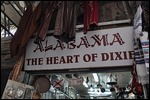


2025-05-22